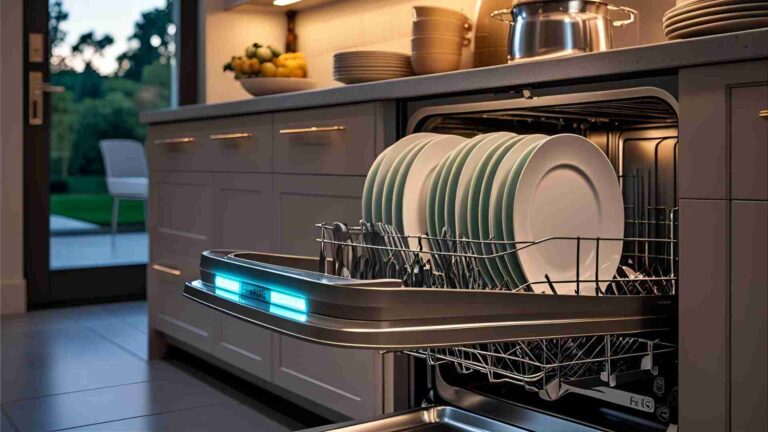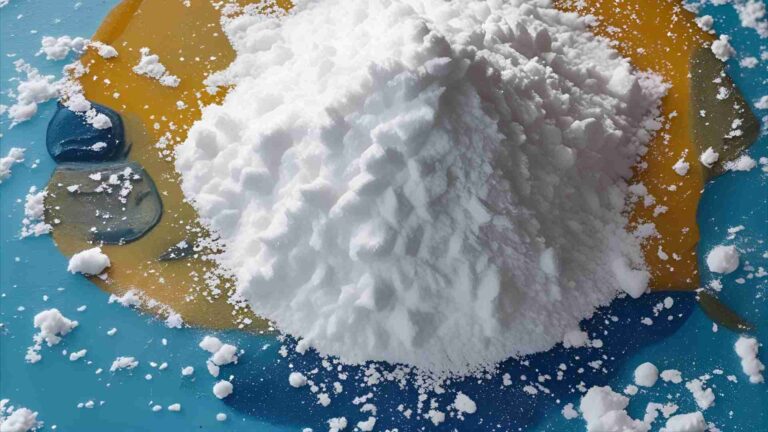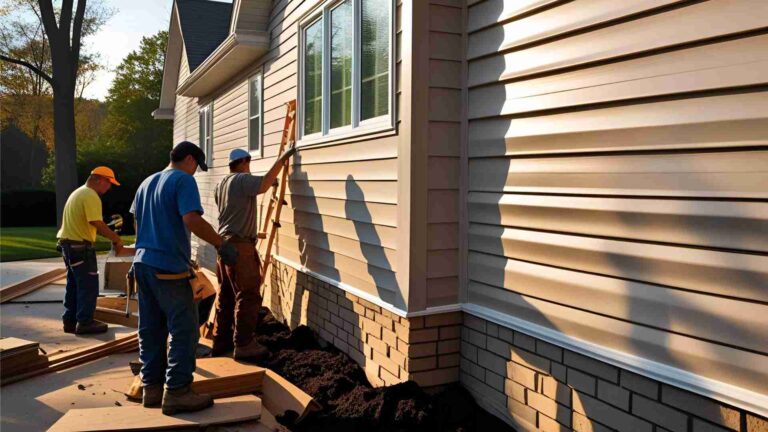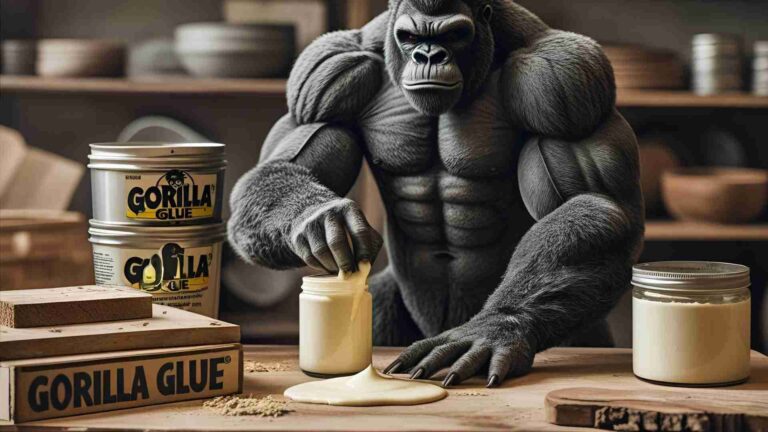How to Remove Gorilla Glue from Any Surface
Learn how to remove Gorilla Glue from skin, plastic, clothes, metal, and more with expert tips and safe methods. Prevent spills and tackle adhesive mishaps effectively.
Gorilla Glue is renowned for its powerful adhesive properties, making it a go-to choice for DIY enthusiasts, crafters, and professionals alike. Its polyurethane-based formula and cyanoacrylate variants (like Gorilla Super Glue) create bonds that are tough to break. However, this strength can become a challenge when the glue ends up on unintended surfaces like skin, plastic, clothing, or metal. Spills and mishaps are common, but with the right techniques, you can safely and effectively remove Gorilla Glue without causing damage. In this comprehensive guide, we’ll explore expert-backed methods to remove Gorilla Glue from various surfaces, provide practical tips to prevent spills, and include actionable steps for tackling even the most stubborn adhesive residue.
This article draws on insights from cleaning specialist Alessandra Mendes and official Gorilla Glue recommendations, ensuring you have reliable, tested solutions. Whether you’re dealing with dried glue on an acrylic sheet or a sticky mess on your skin, we’ve got you covered with detailed instructions, safety precautions, and preventive strategies.
Understanding Gorilla Glue and Its Challenges
Gorilla Glue products, including Original Gorilla Glue, Super Glue, Epoxy, and Construction Adhesives, are formulated to create durable bonds. The Original Gorilla Glue is a polyurethane-based adhesive that reacts with moisture to expand and cure into a semi-hard, foamy consistency. Gorilla Super Glue, a cyanoacrylate adhesive, cures quickly upon exposure to air, forming a rigid bond. These properties make Gorilla Glue ideal for woodworking, crafting, and construction but also mean that removing it requires careful consideration to avoid damaging surfaces or skin.
The key to successful glue removal lies in understanding the adhesive’s state (wet or cured) and the surface it’s on. Wet glue is easier to remove, while cured glue often requires mechanical or chemical intervention. Below, we outline tailored methods for various surfaces, ensuring you can address glue mishaps effectively.
Removing Gorilla Glue from Skin
Accidentally getting Gorilla Glue on your skin can be frustrating, but with patience and the right approach, you can remove it safely. Here are several methods to try, starting with the gentlest options:
1. Warm Soapy Water
Soaking the affected area in warm soapy water is the safest and most recommended method by Gorilla Glue for removing their adhesives, including Original Gorilla Glue, Super Glue, and Epoxies.
Steps:
- Fill a basin with 2 cups (475 mL) of warm water and add 1 tablespoon (14.8 mL) of dish soap.
- Soak the glued skin for 5 minutes to loosen the adhesive.
- Gently wipe the area with a soft cloth. If the glue persists, refill the basin with fresh soapy water and repeat.
- For wet glue, use a dry cloth or paper towel to wipe away as much as possible before soaking.
Why It Works: The warm water and soap penetrate the adhesive, weakening its bond without harsh chemicals.
Tip: After removal, apply a moisturizer like body lotion or baby oil to combat dryness caused by the glue’s moisture barrier.
2. Acetone-Based Nail Polish Remover
For stubborn glue, especially Gorilla Super Glue, acetone is effective but should be used cautiously.
Steps:
- Use 100% acetone nail polish remover (check the label to confirm).
- Dip a cotton swab or ball into the acetone and apply it to the glued area. For larger areas, pour acetone into a small bowl and soak the skin for 6–10 minutes.
- Gently rub the area, then wash with warm soapy water to remove residue.
- Moisturize afterward to restore skin oils stripped by acetone.
Caution: Acetone can dry out skin and nails. Avoid using it on sensitive areas or if you have cuts. Cleaning specialist Alessandra Mendes notes that acetone is unsuitable for plastic, painted surfaces, or wood, so ensure it doesn’t contact nearby materials.
3. Exfoliation with Pumice Stone or Gloves
A pumice stone or exfoliating gloves can mechanically remove glue without chemicals.
Steps:
- Hold a pumice stone firmly and rub it gently across the glued skin, applying light pressure to avoid tearing the skin.
- Change directions with each pass to minimize irritation.
- Alternatively, use rough exfoliating gloves to work the glue loose.
- Wash the area with soapy water and moisturize.
Why It Works: The abrasive texture breaks down the glue’s surface, allowing it to peel away.
Caution: Be gentle to avoid skin damage. Stop if you feel pain or irritation.
4. Citrus Juice
Citric acid in lemon or lime juice can help dissolve Gorilla Glue.
Steps:
- Apply a few drops of citrus juice directly to the glued skin or hold a cut lemon/lime against the area for 5 minutes.
- Gently rub the area and wash with soapy water.
- Moisturize afterward.
Caution: Avoid this method if you have cuts or sores, as citric acid may cause stinging.
5. Sugar or Salt Scrub
A homemade scrub can abrade the glue away.
Steps:
- Mix 1 tablespoon each of sugar and salt with enough water to form a paste.
- Rub the paste onto the glued area with your fingers, applying gentle pressure.
- Wipe off the mixture and reapply as needed until the glue loosens.
- Wash and moisturize the skin.
Why It Works: The coarse texture of sugar and salt wears down the adhesive.
6. Warm Oil
Oils like sunflower, coconut, baby, or olive oil can loosen glue.
Steps:
- Warm a small amount of oil in the microwave for 10–20 seconds (ensure it’s not too hot).
- Apply the oil to the glued area using a cotton swab and let it soak for 3–4 minutes.
- Check if the glue has dissolved. If not, repeat the process.
- Wash with soapy water and moisturize.
Alternative: Non-heated lip gloss or cooking spray may also work for super glue.
7. Waiting It Out
If the glued area is small and not painful, you can let the skin naturally shed the glue.
Steps:
- Avoid picking at the glue to prevent skin damage.
- Monitor for cracking or irritation around the glued area.
- Keep the skin moisturized to aid the shedding process (typically 5–6 days).
Why It Works: Skin regenerates naturally, causing the glue to flake off over time.
Warning: Never pull glued skin apart, as Gorilla Glue’s strength can tear skin. If the glue covers a large area or causes pain, seek medical attention immediately. For emergencies (e.g., glue in eyes or ingestion), contact Gorilla Glue’s medical line at 1-800-420-7186.
Removing Gorilla Glue from Plastic
Plastic surfaces are tricky because many solvents, like acetone, can damage them. Here’s how to remove Gorilla Glue from plastic, including acrylic sheets like those used in neon signs:
1. Soapy Water Soak
Steps:
- Soak a cotton cloth in warm water mixed with dish soap.
- Place the cloth over the glued area for 2–4 hours, keeping it moist by adding more soapy water as needed.
- Wipe away loosened glue. If it persists, gently scrape with a plastic putty knife.
Why It Works: Prolonged exposure to soapy water softens the glue without harming most plastics.
2. Mechanical Removal
For cured glue, especially on acrylic sheets where acetone and Goo Gone failed (as in the neon sign case), mechanical methods are safer.
Steps:
- Use a razor knife, chisel, or plastic scraper to gently lift the edges of the cured glue. Polyurethane glue turns foamy when cured, making it easier to break apart.
- For soft plastics, pick at the glue with your fingers or pliers to avoid scratching.
- Clean residual glue with a spray lubricant (e.g., WD-40) and an abrasive sponge.
Caution: Test the tool on an inconspicuous area to ensure it doesn’t scratch the plastic. Alessandra Mendes advises testing any solvent or tool on a small area first.
3. Nitromethane (Specialty Solvent)
For tough cases, nitromethane (available at hobby stores) can be effective.
Steps:
- Follow the product’s instructions to apply nitromethane to the glued area.
- Wipe away the softened glue and clean the surface with soapy water.
Note: Different plastics react variably, so always test solvents on a hidden area.
Removing Gorilla Glue from Clothes and Fabrics
Glue on clothing or fabric requires careful handling to avoid damage.
1. Acetone or Soapy Water Scrub
Steps:
- Apply acetone (for cotton or polyester) or soapy water to the glued area.
- Use an old toothbrush to scrub the glue, alternating directions or using a jabbing motion to flake it off.
- Test the solvent on an inconspicuous area first to ensure it’s safe for the fabric.
- Once most glue is removed, wash the item in a cool-setting washing machine alone, following the fabric’s care label.
Tip: Wait until the glue is fully dry before washing to prevent it from sticking to other fabric areas.
2. Vinegar or WD-40 for Leather
Steps:
- For leather, avoid acetone or alcohol, which can be too harsh.
- Dab vinegar onto the glued area or spray WD-40 to loosen the glue.
- Gently rub with a soft cloth and clean with a leather-safe cleaner.
Why It Works: Vinegar is gentler, and WD-40 softens both the glue and leather.
Removing Gorilla Glue from Metal and Hard Surfaces
Metal, glass, and other hard surfaces are more resilient, allowing for stronger solvents or scraping.
1. Isopropyl Alcohol
Steps:
- Dampen a cotton ball or paper towel with isopropyl alcohol (70% or higher).
- Place it on the glued area for 5 minutes to soften the adhesive.
- Wipe the area with warm soapy water and scrape with a putty knife if needed.
Caution: Avoid isopropyl alcohol on painted surfaces, as it can strip paint, per Mendes’ advice.
2. Mechanical Scraping
Steps:
- Use a blunt tool like a putty knife to gently scrape the glue off.
- If the glue resists, apply acetone with a cotton ball and try again.
- Ensure the tool doesn’t scratch the surface (e.g., use plastic tools for glass).
Why It Works: Hard surfaces can withstand scraping without damage if done carefully.
3. Glass-Specific Solvents
For glass, stronger solvents are safe.
Steps:
- Apply rubbing alcohol, acetone, or lighter fluid to a cotton ball or cloth.
- Rub the glue in circular motions, applying firm pressure.
- Let the solvent sit for a few minutes if the glue doesn’t come off immediately.
- Clean with soapy water.
Removing Gorilla Glue from Acrylic Sheets
For cases like the neon sign with dried Gorilla Glue residue, where acetone and Goo Gone failed, try these steps:
Steps:
- Mechanical Removal: Use a plastic scraper or razor blade at a low angle to gently lift the foamy, cured glue. Work slowly to avoid scratching the acrylic.
- Spray Lubricant: Apply WD-40 or a similar lubricant to weaken the glue bond. Let it sit for 5 minutes, then wipe with an abrasive sponge.
- Soapy Water Soak: If residue remains, soak a cloth in warm soapy water and leave it on the area for 2–4 hours, then wipe clean.
- Test Nitromethane: If other methods fail, test nitromethane on a small area and follow its instructions.
Note: Acrylic is prone to scratching, so avoid metal tools or harsh abrasives.
Preventing Gorilla Glue Spills
Prevention is the best way to avoid glue removal challenges. Here’s how to work safely with Gorilla Glue:
1. Read Package Instructions
- Always review the Gorilla Glue package for specific application guidelines, such as how to hold the applicator or the amount to use.
- For example, to move glue into the nozzle, hold the bottle upside down and tap the cap on a hard surface.
2. Wear Gloves
- Use disposable or fitted work gloves to protect your skin. Ensure they fit well to maintain dexterity.
- Be cautious not to get glue on the gloves, as it can transfer to other surfaces.
3. Cover Your Workspace
- Clear your work area and cover it with foil or a plastic sheet. Foil is ideal, as cured glue won’t stick to it.
- This protects countertops or tables from accidental spills.
4. Choose the Right Applicator
- Select the appropriate Gorilla Glue product (e.g., pen, gel, or tube) for your project. Small applicators are better for precision, while larger ones suit bigger jobs.
- Use minimal glue, as even large projects require only a small amount.
5. Work in a Well-Ventilated Area
- Ensure proper ventilation to avoid inhaling fumes, especially with Gorilla Super Glue or Epoxy.
Gorilla Glue Product Specifications and Prices
The Gorilla Glue product line includes various adhesives, each suited for specific applications. Below is a table summarizing key products, their uses, and approximate retail prices (based on common online retailers like Amazon, Home Depot, or Walmart, subject to change).
| Product | Type | Best For | Key Features | Approx. Price (USD) |
|---|---|---|---|---|
| Original Gorilla Glue | Polyurethane Adhesive | Wood, metal, ceramic, stone, foam | Expands, moisture-activated, strong bond | $6–$10 (4 oz) |
| Gorilla Super Glue | Cyanoacrylate Adhesive | Plastic, metal, rubber, leather | Fast-drying, impact-resistant | $5–$8 (15g) |
| Gorilla Super Glue Gel | Cyanoacrylate Gel | Vertical surfaces, porous materials | No-run formula, precise application | $6–$9 (15g) |
| Gorilla Wood Glue | PVA-Based Adhesive | Woodworking | Water-resistant, fast-setting | $4–$7 (8 oz) |
| Gorilla Epoxy | Two-Part Epoxy | Metal, plastic, wood, ceramics | Clear finish, gap-filling | $7–$12 (0.85 oz) |
| Gorilla Construction Adhesive | Polyurethane-Based Adhesive | Heavy-duty construction, outdoor use | All-weather, strong bond | $8–$15 (9 oz) |
| Gorilla Fabric Glue | Specialty Adhesive | Fabrics, felt, denim | Washable, flexible bond | $5–$8 (2 oz) |
Note: Prices vary by retailer and region.
Chart: Gorilla Glue Removal Process
Below is a flowchart outlining the general process for removing Gorilla Glue from different surfaces, created using Mermaid syntax for clarity.

Safety Warnings and Emergency Contacts
- Eyes: If Gorilla Glue gets in your eyes, rinse immediately with water. Seek medical attention if you can’t flush it out or if eyelids stick together.
- Ingestion: If swallowed, seek emergency medical treatment immediately.
- Large Skin Areas or Pain: Contact Gorilla Glue’s medical line at 1-800-420-7186 or seek professional help.
- Product Support: For additional help, call Gorilla Glue Customer Service at 1-800-966-3458.
Expert Insights and Community Tips
Cleaning specialist Alessandra Mendes emphasizes testing solvents on inconspicuous areas to avoid surface damage. She recommends hydrogen peroxide as an alternative to acetone for skin and warns against using isopropyl alcohol on painted surfaces. Community feedback from platforms like Reddit’s r/DIY suggests that mechanical methods (e.g., scraping with plastic tools) are often effective for acrylic sheets when solvents fail, as seen in the neon sign case.
Conclusion
Removing Gorilla Glue from any surface is manageable with the right techniques and precautions. Whether it’s soaking skin in soapy water, scraping plastic with a razor blade, or using acetone on metal, each method requires patience to avoid damage. Preventive measures like wearing gloves and covering your workspace can save you from cleanup hassles. By following this guide, you’ll be equipped to handle Gorilla Glue mishaps confidently, ensuring your DIY projects stay on track.
For further assistance, contact Gorilla Glue’s support team or consult a professional for stubborn cases. With these expert-backed strategies, you can tackle even the toughest adhesive challenges effectively.
Please share this How to Remove Gorilla Glue from Any Surface your friends and do a comment below about your feedback.
We will meet you on next article.
Until you can read, DIY Guide: Fixing Cracks, Chips & Holes in Your Bathtub






